AWS Certified Developer - Associate
Databases
Elasticache Overview
In this lesson, learn how Amazon ElastiCache can dramatically enhance your application's performance by leveraging effective caching strategies.
The Problem Without Caching
Applications that rely exclusively on traditional disk-based databases face significant challenges. Every user request triggers a database query, and the resulting high query volume can overload the system. Disk-based storage inherently suffers from slower read/write speeds, resulting in performance bottlenecks as user demand increases.
Common issues encountered include:
- A surge in read requests that burdens the database.
- High latency due to slower disk-based operations.
- General performance degradation and scalability hurdles as the user base expands.
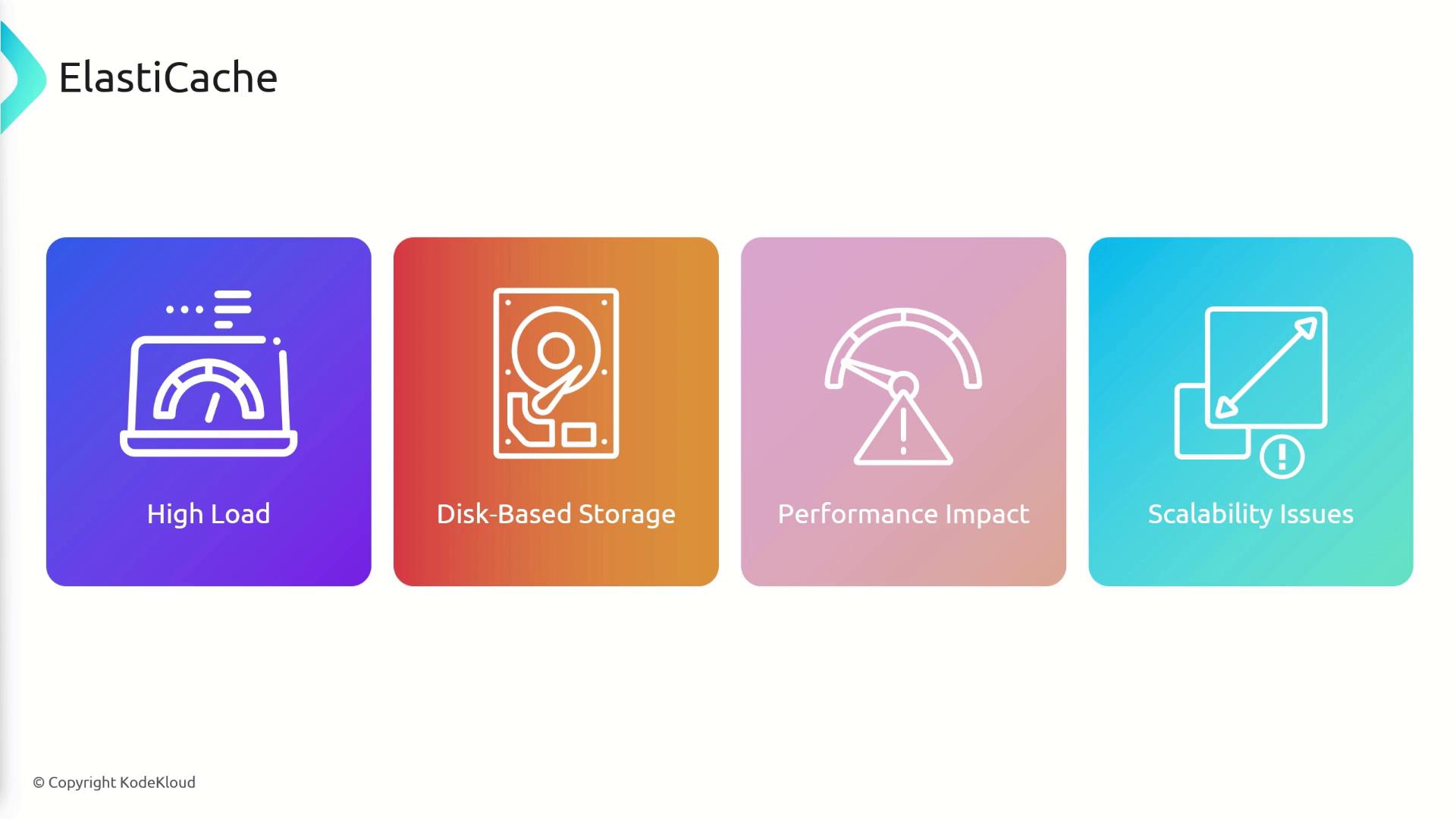
How Caching Improves Performance
Caching significantly reduces the pressure on disk-based databases by storing frequently accessed data in a high-speed, in-memory cache. When a user request is made:
- A cache hit returns the data instantly.
- A cache miss prompts the system to fetch data from the database and subsequently update the cache for future requests.
This strategy accelerates data retrieval and eases the load on your primary database, which is especially beneficial for high-traffic applications.
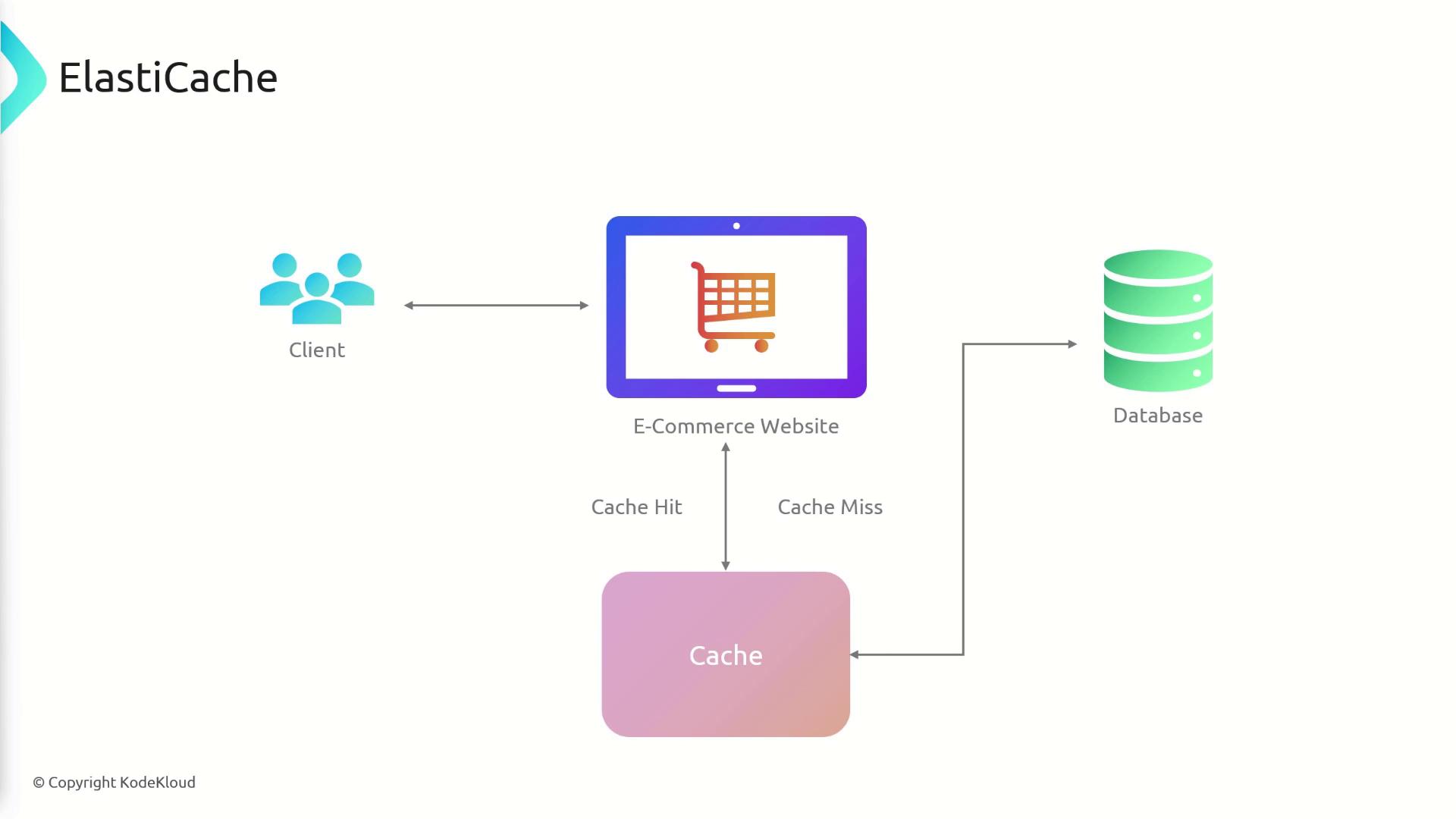
Note
Caching is not only vital for reducing database load—it is also an excellent solution for managing session data, such as login status, by offloading this responsibility to ElastiCache.
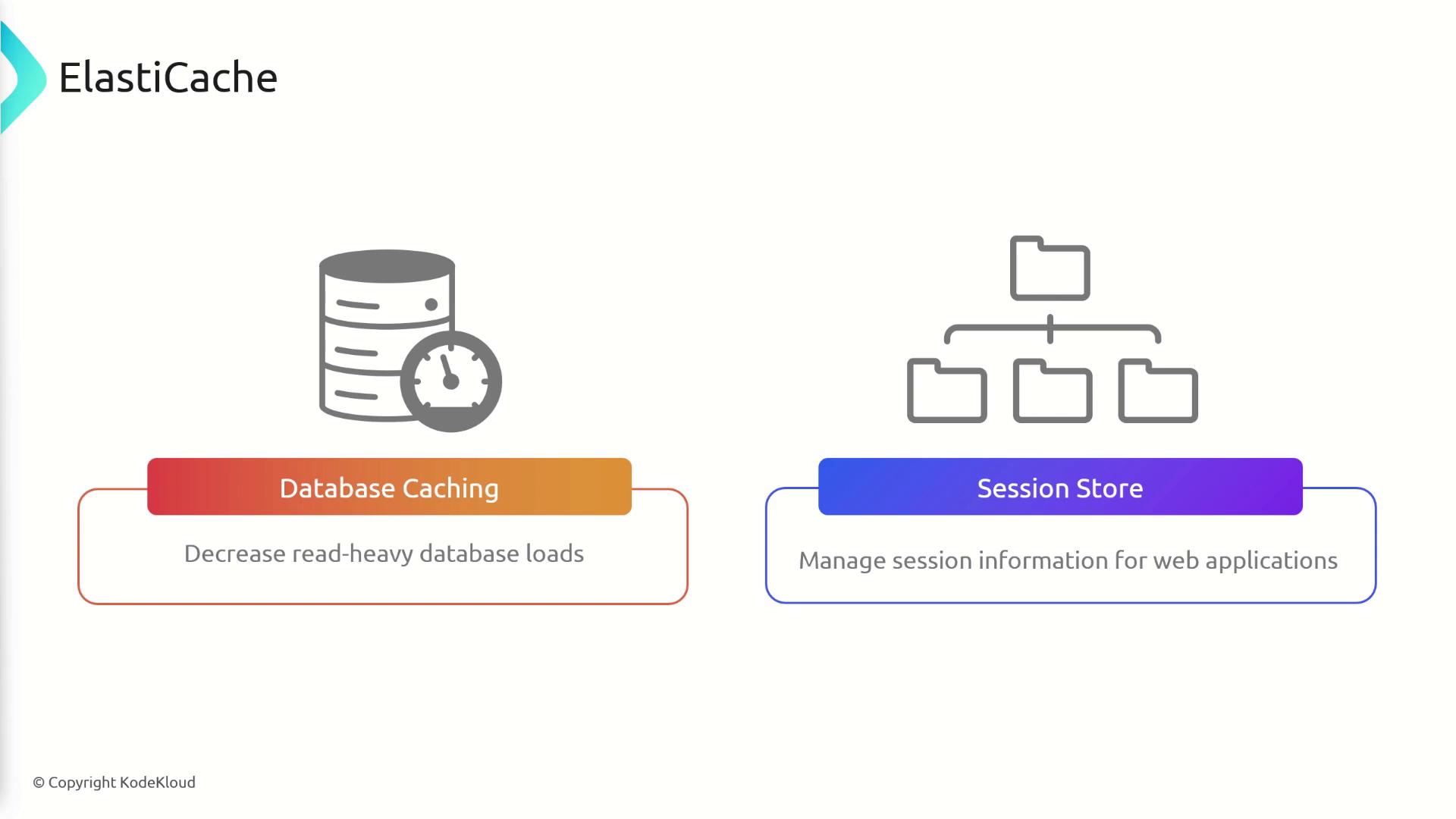
Understanding Amazon ElastiCache
Amazon ElastiCache is a fully managed in-memory caching service that accelerates application performance. Key benefits include:
- Fast data retrieval compared to traditional disk-based databases.
- AWS-managed infrastructure that handles hardware provisioning, software patching, setup, configuration, monitoring, failure recovery, and backups.
- Seamless scalability, allowing clusters to be expanded horizontally or vertically with minimal disruption.
- High availability via multi-AZ replication and automatic failover mechanisms.
ElastiCache supports two of the most popular open-source in-memory caching engines:
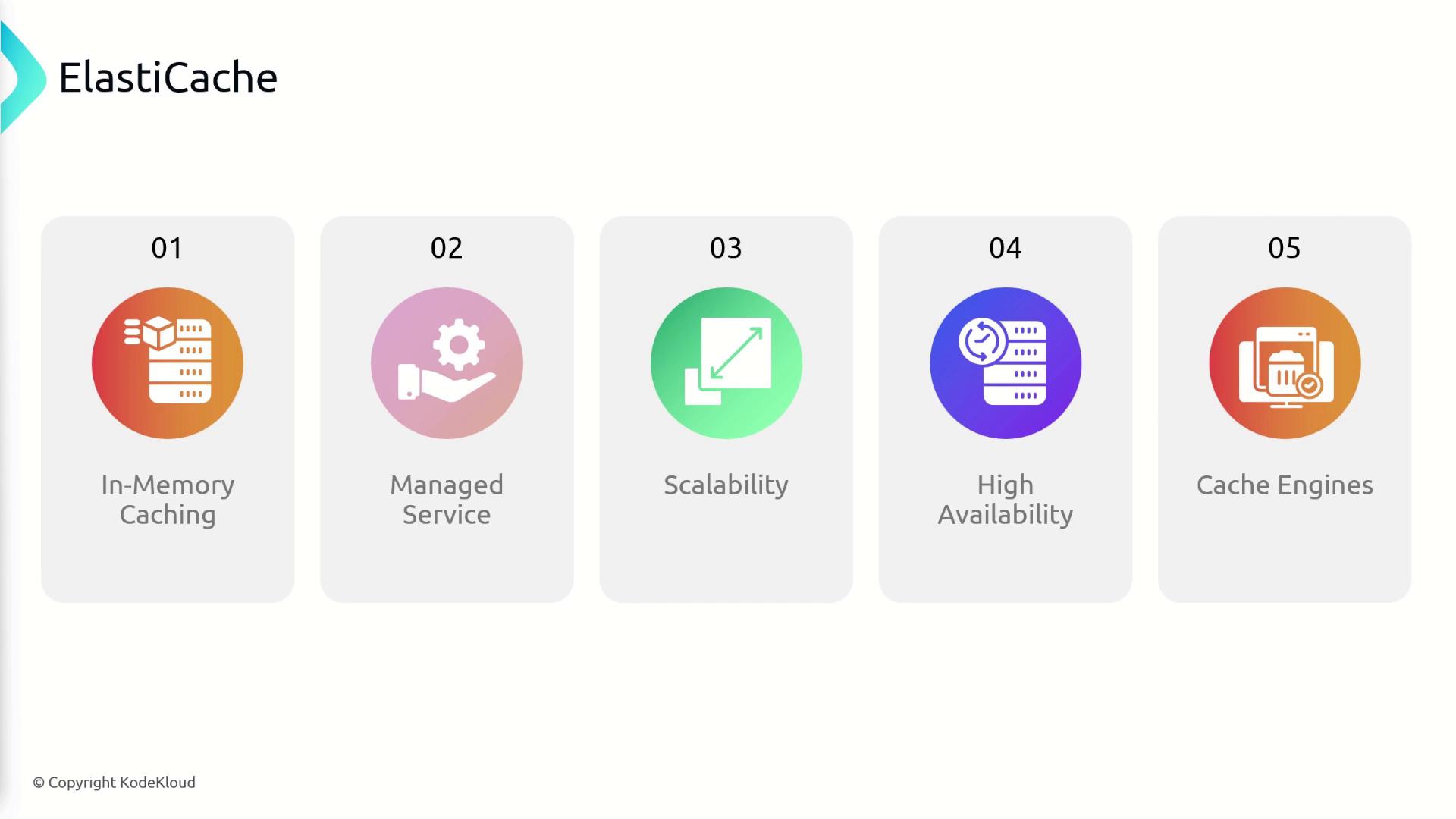
Redis versus Memcached
ElastiCache is compatible with both Redis and Memcached, but understanding their differences is crucial for selecting the engine that best fits your application's needs.
Redis
- Offers support for a variety of data types such as hashes, lists, sets, and sorted sets.
- Provides data persistence with disk-based backups.
- Features replication and failover capabilities, including multi-AZ deployments.
- Supports advanced features like backup, restore, and data partitioning.
Memcached
- Implements a simple, high-performance key-value store.
- Does not support data persistence; all information is lost on restart.
- Lacks built-in replication and failover features.
- Does not offer multi-AZ deployments or backup/restore options.
- Optimized for efficient CPU utilization through multi-threading.
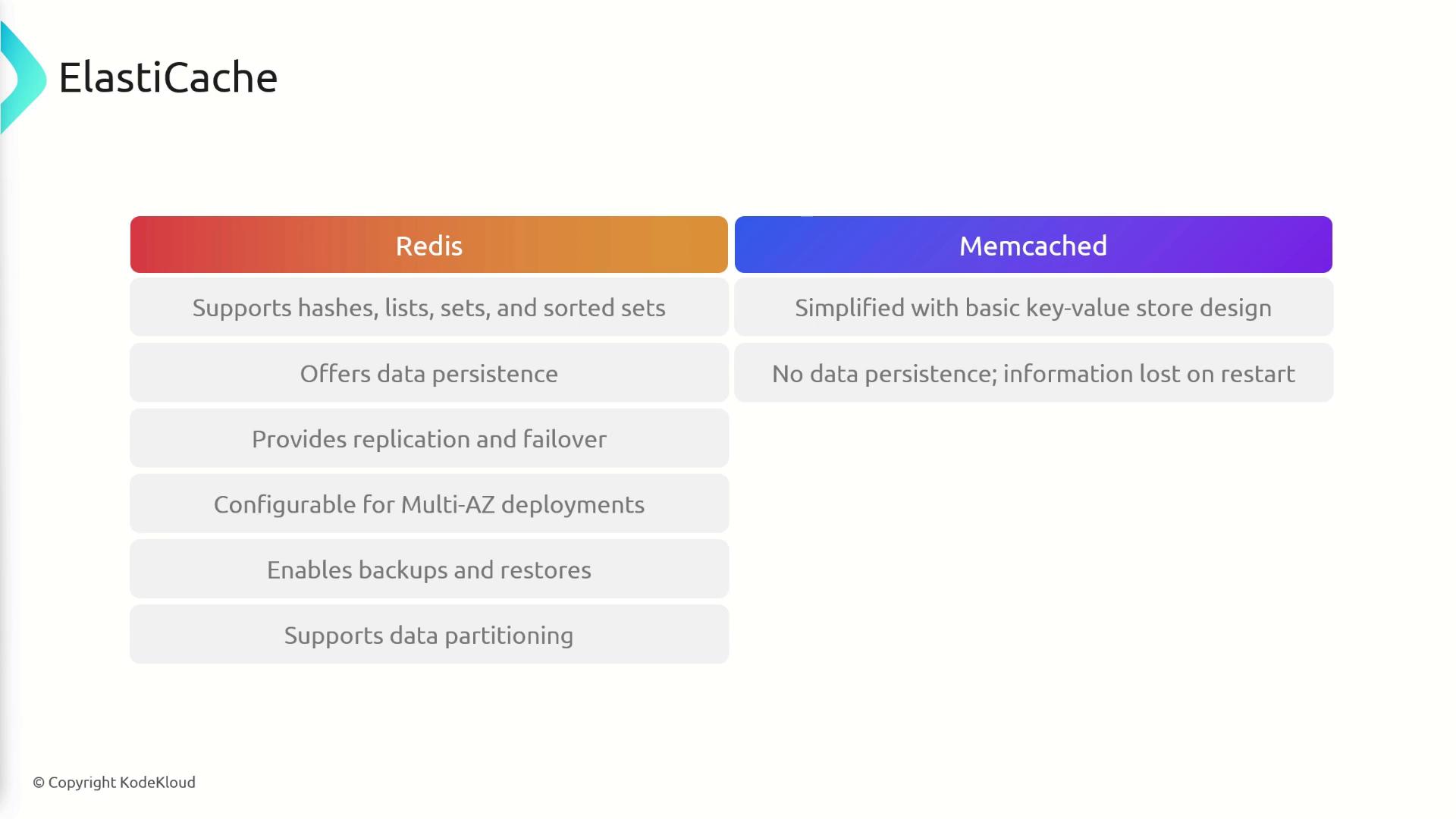
Summary
Amazon ElastiCache stands out as a powerful, fully managed caching solution that supports both Redis and Memcached. By offloading read-heavy operations from disk-based databases, ElastiCache reduces latency and enhances the overall responsiveness of your application. Its scalable architecture and high availability features are designed to handle increasing user demand seamlessly.
Integrating ElastiCache into your system not only optimizes database performance but also improves user experience by ensuring rapid response times. Explore how you can leverage caching to manage database loads effectively and boost application scalability.
For more information, refer to the AWS Documentation.
Watch Video
Watch video content